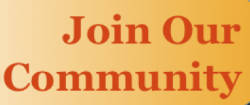 Conversations around talent communities have been steadily increasing in the U.S. in the last 12 months. Brands are looking to engage above and beyond existing social media platforms by creating professional candidate communities. Driven by particular segments of talent that are becoming increasingly hard to find, the need to have a pipeline or a pool of potential employees is now, for many, an imperative.
Conversations around talent communities have been steadily increasing in the U.S. in the last 12 months. Brands are looking to engage above and beyond existing social media platforms by creating professional candidate communities. Driven by particular segments of talent that are becoming increasingly hard to find, the need to have a pipeline or a pool of potential employees is now, for many, an imperative.
For instance, there is an ongoing requirement in the FMCG industry in North America for sales and marketing talent — making it a vibrant, fast-paced and ultimately competitive recruitment market. Organizations are battling with the fact that they know they will need talent at a point in the future, but in today’s economic climate they don’t have the luxury to hire them when they first encounter them.
It is against this backdrop that talent and recruitment professionals are exploring the role that talent communities can play in adopting a more strategic approach to recruitment.
In fact, at a recent event in Chicago, the vast majority of organizations I spoke to believed they would be using talent communities in the next 12 months. They provide a way to engage and connect people of similar backgrounds, skills, and experiences into groups where they can share, develop and interact. With 42% of job seekers more likely to apply for a job at a company after they’ve interacted with it online, it is no wonder that HR directors are taking notice of the potential these hubs have. But with consumers as well as candidates able to join and interact in these communities, one of the areas that is causing confusion in the industry is how you differentiate between future employees and fans.
Depending on the size and scale of the community, a good way to ensure the dialogue you have is relevant to the community member is to assess them in order to build out a defined profile. This is a quick and easy way for an organization to learn the about the individuals within their community and to later use this information to attract and engage potential candidates rather than consumers. The candidate can learn a lot about themselves while feeling like the organization is truly getting to know them. Even if they are a consumer and this is as far as their journey goes, it is a way for them to feel involved and engaged. This kind of dialogue is also encouraged through sharing content with the community with a view to increasing interaction. By sparking two-way conversations, individuals will begin to buy into the brand’s position as a thought leader in their specialist area, and provide useful opinions on the company’s offering.
But is there a need to formally categorize future talent from consumers within talent communities? Well, I think it depends on the service and product you have as a business, but there are some really interesting ways of leveraging recruitment sites for multiple purposes.
For example, I recently worked with a client in Europe — a large brewer — to investigate who was a consumer as well as a candidate. After creating an employer brand for the client, as part of the implementation stage we set up a centralized careers portal for candidates from multiple countries across EMEA. The portal enabled them to find out more about the brand but, on that particular site, we also embedded a small promotional link for the latest product launch from the client.
This enabled us to track how many candidates clicked through the portal and that particular link, and went on to purchase the product itself. The experiment was very successful with several thousand euros being generated as a result of career seekers clicking through. As a result, senior stakeholders in HR discussed with their marketing director how they would go about using the career portal as another way of generating sales.
So as organizations in the U.S. start to embrace talent communities as a new approach for recruitment, work with the business and look at the broader application of the platform rather than seeking to limit it to a certain “type” of member. It is increasingly difficult to segment people into groups; it is often easier to embrace the fact that one day they may be a fan and the next a potential candidate. The focus has got to be on making the community the best it can be for all members — engaging, informative, and exciting. That way — whether a member is a fan or a candidate — they get the best possible information about and insight into your brand.